DEEP PURPLE
Deep Purple are an English rock band formed in Hertford in 1968.Along with Led Zeppelin and Black Sabbath, they are considered to be among the pioneers of heavy metal and modern hard rock, although some band members claimed that their music cannot be categorised as belonging to any one genre.They were once listed by the Guinness Book of World Records as "the loudest pop group", and have sold over 100 million albums worldwide, including 7.5 million certified units in the United States.Deep Purple were ranked #22 on VH1's Greatest Artists of Hard Rock programme.
The band has gone through many line-up changes and an eight-year hiatus (1976–84). The 1968–76 line-ups are commonly labelled Mark I, II, III and IV.Their second and most commercially successful line-up featured Ian Gillan (vocals), Roger Glover (bass), Jon Lord (keyboards), Ian Paice (drums), and Ritchie Blackmore (guitar). This line-up was active from 1969 to 1973, and was revived from 1984 to 1989, and again in 1993, before the rift between Blackmore and other members became unbridgeable. The current line-up (including guitarist Steve Morse) has been much more stable, although Lord's retirement in 2002 has left Paice as the only original member never to have left the band. As of 2012, the band has not been inducted into the Rock and Roll Hall of Fame.
Discography:
SHADES OF DEEP PURPLE
(1968)
Shades of Deep Purple is the debut album by English hard rock band Deep Purple, released in July 1968 on Tetragrammaton in the United States and in September 1968 on Parlophone in the United Kingdom.It was released without much attention in the UK, where it did not perform sales-wise. In the US on the other hand, it was a massive success, contributing largely to the attention Deep Purple would get there and also eventually also over to the UK. Sound-wise, it is more leaned on psychedelia and progressive rock.
- Released: July 1968
- Label: Tetragrammaton
- Format: LP, Reel-to-Reel, 8-track, CD
(1968)
The Book of Taliesyn is the second album by English rock band Deep Purple, released by EMI's Harvest Records in the UK (1968), Tetragrammaton in the US (1968), and Polydor in Canada and Japan (1969).The album follows the psychedelic/progressive rock sound of Shades of Deep Purple; however, there is a harder edge to several songs, beginning to show the new sound Deep Purple would introduce in 1970 with Deep Purple in Rock. Also, the original tracks are longer and more diverse than the ones on Shades of Deep Purple, proving that the band had expanded their creativity and ambitions when it came to writing their own material.Although there isn't any title track in this album, the title-phrase "The Book of Taliesyn" appears in the lyrics for the song "Listen, Learn, Read On."
- Released: December 1968
- Label: Tetragrammaton
- Format: LP, Reel-to-Reel, 8-track, CD
(1969)
Deep Purple, also referred to as Deep Purple III, is the third studio album by English rock band Deep Purple, released in 1969 on Harvest Records in the UK and on Tetragrammaton in the US. It was to be the last album with the original lineup.It was released at a time when the band were starting to grow as performers, both live and in the studio, finding their direction musically. There were some conflicts over whether the band should continue on their rawer, heavier direction. This caused turmoil, which was partially responsible for two of the members, Nick Simper (bass) and Rod Evans (vocals), being replaced. Commercially, this album was the least successful of the three Mark I era albums.
- Released: June 1969
- Label: Tetragrammaton
- Format: LP, Reel-to-Reel, 8-track, CD
(1970)
Deep Purple in Rock (also known as In Rock) is an album by English rock band Deep Purple, released in June 1970. It was their fourth studio album and the first with the classic Mk II lineup. Rod Evans (vocals) and Nick Simper (bass) had been fired in June 1969 and were replaced by Ian Gillan and Roger Glover, respectively.
Deep Purple in Rock was their breakthrough album in Europe and would peak at #4 in the UK, remaining in the charts for months. (The band's prior MK I albums had been much better received in North America than in their homeland.) The album was supported by the hugely successful In Rock World Tour which lasted 15 months.
Although this was the first studio album to feature the MK II lineup of the band, it was this lineup that had earlier recorded the live Concerto for Group and Orchestra. The album was also preceded by two singles, the first studio recordings that Gillan made with Deep Purple. The first single, released in 1969, was a Greenaway-Cook composition called "Hallelujah", which flopped. The second single, "Black Night", fared much better as it rose all the way to #2 on the UK charts.
In 2005 the album won the Classic Rock Roll Of Honour Award (given by the British monthly magazine Classic Rock) in the category Classic Album. The award was presented to Ian Gillan, Ian Paice and Jon Lord.
- Released: June 1970
- Label: Harvest
- Format: LP, Reel-to-Reel, 8-track, CD, CS
(1971)
Fireball is an album by English rock band Deep Purple, released in 1971. It was their fifth studio album, and the second with the classic Mk II lineup. It was recorded at various times between September 1970 and June 1971. It would become the first of the band's three UK #1 albums, though it didn't stay on the charts as long as its predecessor, In Rock.
- Released: July 1971
- Label: Harvest
- Format: LP, Reel-to-Reel, 8-track, CD, CS
(1972)
Machine Head is the sixth studio album released by the English rock band Deep Purple. It was recorded through December 1971 in Montreux, Switzerland, and released in March 1972.Machine Head is often cited as influential in the development of the heavy metal music genre. It is Deep Purple's most successful recording, topping the charts in several countries following its release. The album reached number 1 in the United Kingdom and stayed in the top 40 for 20 weeks. It reached number 7 in the United States, remaining on the Billboard 200 for 118 weeks.
- Released: March 1972
- Label: Purple
- Format: LP, Reel-to-Reel, 8-track, CD, CS
(1973)
Who Do We Think We Are is the seventh studio album by the English rock band Deep Purple. It was recorded in Rome (in July 1972) and Frankfurt (October 1972) using the Rolling Stones Mobile Studio. It was Deep Purple's last album with the Mark II lineup of the group until Perfect Strangers (1984).
- Released: January 1973
- Label: Purple
- Format: LP, Reel-to-Reel, 8-track, CD, CS
(1974)
Burn is the eighth studio album by English rock band Deep Purple. It was recorded in Montreux, Switzerland, in November 1973 with the Rolling Stones Mobile Studio, and released in February 1974.
- Released: February 1974
- Label: Purple
- Format: LP, Reel-to-Reel, 8-track, CD, CS
(1974)
Stormbringer is the ninth studio album by Deep Purple, released in November 1974. On this album, the soul and funk elements that were only hinted at on Burn are much more prominent. Ritchie Blackmore would leave after the making of this album, returning later during the recording of the Perfect Strangers album.
- Released: December 1974
- Label: Purple
- Format: LP, Reel-to-Reel, 8-track, CD, CS
(1975)
Come Taste the Band is the tenth studio album by the English rock band Deep Purple originally released in October 1975. The album was co-produced and engineered by the band and longtime associate Martin Birch. It is the only Deep Purple studio record featuring Tommy Bolin, who replaced Ritchie Blackmore on guitar.When Blackmore left the band, many observers and critics assumed that Deep Purple would not continue. It was David Coverdale who asked Jon Lord to keep the band together, and Tommy Bolin was asked to take the guitar slot. A deluxe edition of the album was released in 2010.
- Released: October 1975
- Label:Purple
- Format: LP, Reel-to-Reel, 8-track, CD, CS
(1984)
Perfect Strangers is the eleventh studio album by Deep Purple, released in October 1984. It represents the first album recorded by the reformed, the most successful and popular, 'Mark II' line-up.[1]
It was the first Deep Purple studio album in nine years, and the first with the Mk II lineup for eleven years, the last being Who Do We Think We Are in 1973. Ritchie Blackmore and Roger Glover arrived from Rainbow, Ian Gillan from Black Sabbath, Jon Lord from Whitesnake, and Ian Paice from Gary Moore's backing band.
The CD and cassette versions of the album contained the extra track "Not Responsible" (one of few Deep Purple songs with profane lyrics, as the word "fucking" can be heard in the song). The album was remastered and reissued June 22, 1999 with the bonus instrumental track "Son of Alerik". The latter had previously been available as a B-side on "Perfect Strangers" in 1984.
In 1985 they headlined the Knebworth Festival in England.
- Released: 16 September 1984
- Label: Polydor
- Format: LP, CD, CS
(1987)
The House of Blue Light is the twelfth studio album by Deep Purple, released in 1987. It is the second recording by the re-formed Mark II lineup.
The album's creation was an exceedingly long and difficult process, and Ritchie Blackmore has said much of it was re-recorded.[3] Ian Gillan has remarked on how strained relations within the band compromised the album: "I look back at House Of Blue Light, there are some good songs on that record, but there’s something missing in the overall album. I can’t feel the spirit of this band. I can see or hear five professionals doing their best, but it’s like a football team, it’s not functioning. It’s like eleven superstars that are playing on the same field but are not connected by the heart or by the spirit".[4] Added organist Jon Lord, "We made the massive mistake of trying to make our music current. We discovered that people didn’t want us to do that."[5]
Several tracks on the LP version are shorter than those of the original CD released in 1987. The 1999 CD remaster used the original vinyl master tapes, and so its running time is correspondingly shorter than the original CD version as well.
Two promotional videos to the songs "Bad Attitude" and "Call of the Wild" were produced. However, only the first featured members of the band.
- Released: January 1987
- Label: Polydor
- Format: LP, CD, CS
(1990)
Slaves and Masters is the thirteenth studio album by Deep Purple, and was released in 1990. This is the band's only album to feature singer Joe Lynn Turner, who joined the previous year (and was once the lead singer of Ritchie Blackmore's solo band Rainbow).Before hiring Turner, the band had considered singer Jimi Jamison of Survivor, but other obligations made him unavailable.Hard rock-based core Purple fans thought the vocal parts ended up being a bit too melodic. However, Turner was still a member of the group when they began recording their next album in 1992.The album peaked at #87 on the Billboard Charts, and a relatively successful 1991 tour followed in particularly Europe.
- Released: October 1990
- Label: BMG
- Format: LP, CD, CS
(1993)
The Battle Rages On... is the 14th studio album by Deep Purple, released in 1993. It is the last album recorded with the band's classic Mk II line-up reunited for a second time (the first being 1984's Perfect Strangers). Since Ian Gillan returned to the band in late 1992, he reworked much of material already existing for the album. Ritchie Blackmore became infuriated at the non-melodic elements and quit during the tour in November 1993. Joe Satriani joined Deep Purple as a temporary replacement during the band's tour.
- Released: July 1993
- Label: BMG
- Format: LP, CD, CS
(1996)
Purpendicular is the fifteenth studio album by English rock band, Deep Purple. Released in 1996, it is their first album with Steve Morse, guitarist of Dixie Dregs. It was recorded at Greg Rike Productions, Orlando, Florida, February to October 1995 and engineered by Darren Schneider and Keith Andrews. It has a more experimental feel than previous albums. "The Aviator" has an arrangement unlike anything else the band has previously attempted. Several of the songs, such as Vavoom: Ted the Mechanic feature smaller keyboard parts, and mainly centre around the guitar parts.
Another new addition to the guitar playing was the use of pinch harmonics, very notably used on "Vavoom: Ted the Mechanic" and "Somebody Stole My Guitar". "Sometimes I Feel Like Screaming" and "Vavoom: Ted the Mechanic" remained regular features in Deep Purple's live setlist in recent tours.Like the title of the band's following album, Abandon, Purpendicular is a pun; in this case, based on the band's name and the word "Perpendicular".
- Released: February 1996
- Label: Phantom Records
- Format: CD, CS, LP (2011)
(1998)
Abandon is the sixteenth studio album by Deep Purple released in 1998.The album title is actually a pun from Ian Gillan – "A Band On" – and the album was followed by the "A Band On Tour". Uniquely for a Deep Purple studio album, it features a reworking of a previously recorded song -"Bloodsucker" from Deep Purple in Rock (here re-titled "Bludsucker"). "Don't Make Me Happy" was mistakenly mastered in mono, and not amended on the final release.The album was recorded at Greg Rike Studios, Orlando, Florida, during 1997/98. Engineered by Darren Schneider. It was Deep Purple's last studio album with founding member Jon Lord.
- Released: May 1998
- Label: CMC International
- Format: CD, CS
(2003)
Bananas is the 17th studio album by English rock band Deep Purple, released on October 7, 2003.It includes "Contact Lost", a short, slow instrumental about the Columbia astronauts, written by guitarist Steve Morse when he heard the sad news of the crash.This is the first Deep Purple album to feature Don Airey on the keyboards, replacing founding member Jon Lord.The album was recorded in Los Angeles during January and February 2003.It is also notable as being the only Deep Purple album that features Ian Gillan being backed by vocals other than his own, with the song "Haunted" featuring a female backing singer, Beth Hart.
- Released: September 2003
- Label: Sanctuary
- Format: LP, CD
(2005)
Rapture of the Deep is the 18th studio album by English hard rock band Deep Purple, released in November 2005. It is currently the band's most recent studio album.
It is the fourth studio album from Deep Purple since Steve Morse joined the band in 1994. It is also the second album to feature veteran keyboardist Don Airey. The album was produced by Mike Bradford, who also produced the band's previous release, Bananas. Like Bananas, the album generally received positive reviews from critics.Rapture of the Deep is Deep Purple's first release in Europe on the minor label Edel Records, while in the US the record was released by Edel's sub-label Eagle Records.
The album peaked on Billboard's USA "Top Independent Albums" Chart at position #43.It also made the top 20 in several European charts.
- Released: October 2005
- Label: Edeltone
- Format: LP, CD
- Concerto World Tour, 2000–2001
- Deep Purple World Tour, 2001–2003
- Bananas World Tour, 2003–2005
- Rapture of the Deep World Tour, 2006–2011
- Deep Purple: The Songs That Built Rock Tour 2011–2012



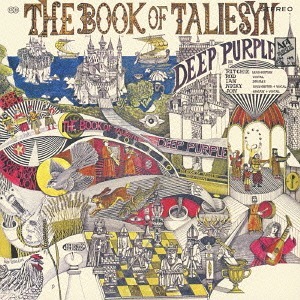
.jpg)


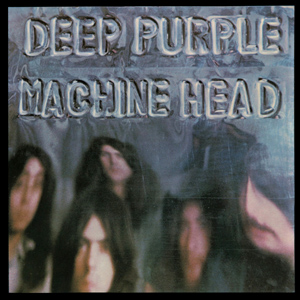

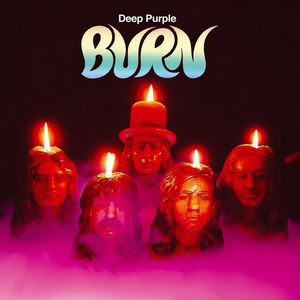
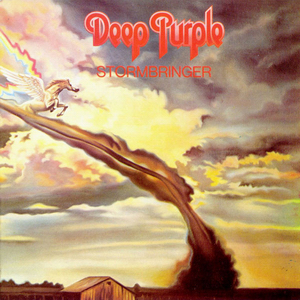




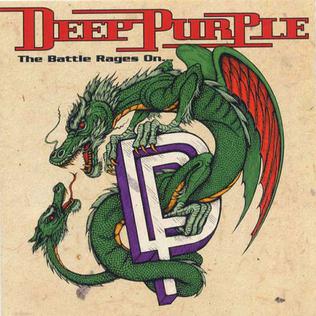
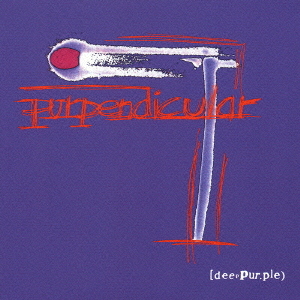
.jpg)
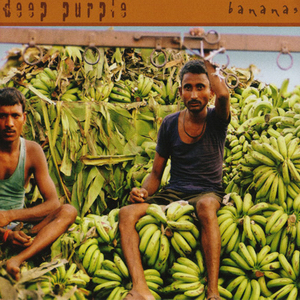

No comments:
Post a Comment